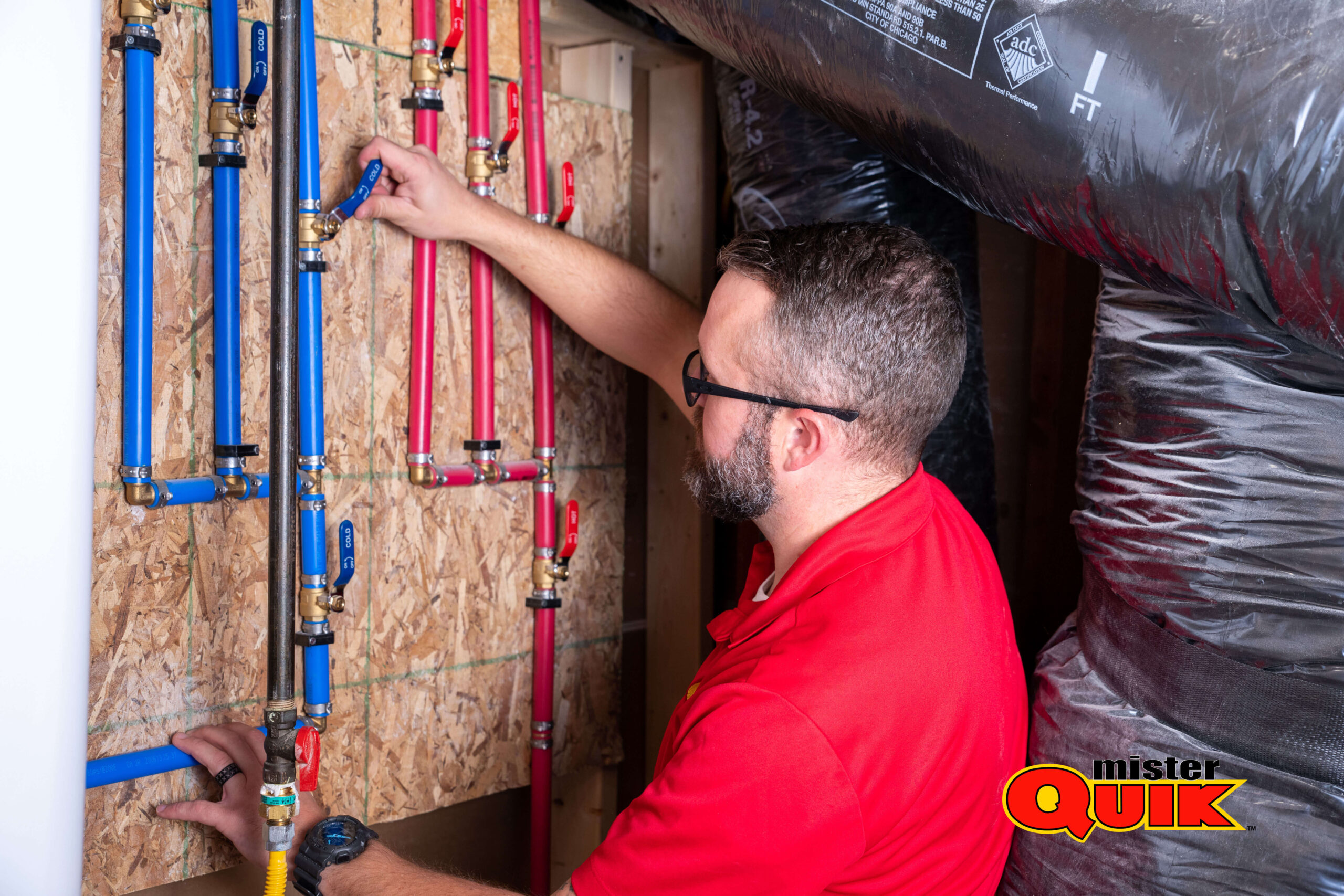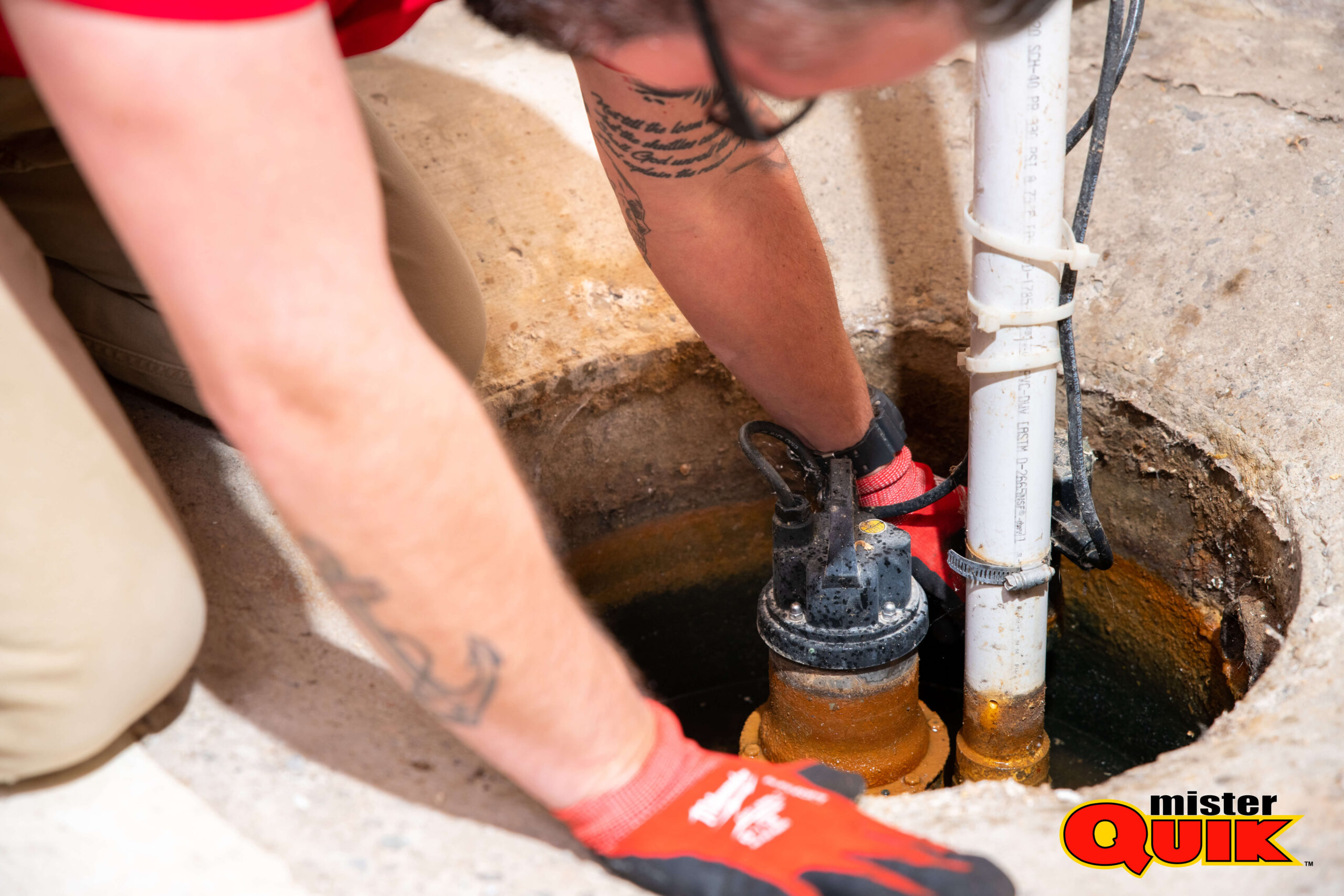Bloomington- Water heater flushing

Bloomington- Water heater flushing
If you looking for Bloomington- Water heater flushing, Mister Quik Home Services is here to help. Here’s what you need to know about Bloomington- Water heater flushing:
1. Purpose: Bloomington- Water heater flushing is a maintenance task that involves draining the tank to remove sediment buildup. Over time, minerals and debris can accumulate at the bottom of the tank, affecting heating efficiency and potentially causing damage.
2. Frequency: It’s recommended to get Bloomington- Water heater flushing at least once a year to prevent sediment buildup and prolong the lifespan of your unit. However, in areas with hard water or high sediment levels, more frequent flushing may be necessary.
3. Process: During Bloomington- Water heater flushing, our technicians will first turn off the power or gas supply to the unit and shut off the cold water inlet valve. They will then connect a hose to the drain valve at the bottom of the tank and drain the water into a suitable drainage area. Once the tank is empty, they will flush out any remaining sediment by opening and closing the cold water inlet valve several times. Finally, they will refill the tank and turn the power or gas supply back on.
4. Professional Service: While it’s possible to Bloomington- Water heater flushing yourself, it’s recommended to hire professionals like Mister Quik Home Services for thorough and efficient service. Our experienced technicians have the expertise and equipment to Bloomington- Water heater flushing safely and effectively, ensuring optimal performance and longevity.
5. Benefits of Professional Service: By hiring professionals for Bloomington- Water heater flushing, you can save time and effort while ensuring that the task is done correctly. Our technicians will also inspect your water heater for any signs of damage or issues, providing recommendations for repairs or maintenance as needed.
For reliable Bloomington- Water heater flushing, trust the experts at Mister Quik Home Services. Contact us today to schedule an appointment and keep your water heater operating at its best.
Moen Delta Faucets Kohler American Standard Toto Mansfield Plumbing Price Pfister Peerless Lochinvar Rinnai Navien Grohe Speakman Gerber Whirlpool Easywater AO Smith Rheem Bradford White Culligan Kinetico Sterling Brizo Gastite Zoeller Glentronics Zurn Grundfos Pumps Blanco Bocchi Bradley Company Brasscraft Manufacturing Company Kerox, Ltd. Dornbracht Americas Inc. Falcon Water Technologies, LLC Fisher Manufacturing Company Fluidmaster, Inc. Hansgrohe, Inc. Haws Corporation LAUFEN Schweiz AG Lavelle Industries, Inc. LIXIL LSP Products Group LLC Marcone Plumbing Masco Corporation Neoperl, Inc. Reliance Worldwide Corporation Sloan Valve Company Sprite Industries T&S Brass and Bronze Works, Inc. Uponor Viega LLC Water Pik, Inc. WCM Industries, Inc.
Axor Decolav Dreamline Showers DXV Fairmont Design Fortis Franke Geberit Plumbing Ginger Graff HydroSystems Infinity Drains In-Sink-Erator Jacuzzi James Martin LinkaSink MTI Native Trails Newport Brass PROFLO Rohl Signature Hardware Strasser Swanstone Thompson Traders Watermark Zucchetti Alfi ANZZI Altair AquaPure Avanity Avano Azzuri Bella CORE Bemis Brondell CRAFT + MAIN California Faucets Chicago Faucets Clarke Cutler Kitchen and Bath Duravit EAGO Eccotemp Eemax Fresca Giagni Houzer Jones Stephens Kaldewei Kingston BrassKraus Liberty Pumps Little Giant MediTub Nameeks OVE Decors Pulse Purewater Baths Sagehill Designs Saniflo Stiebel Eltron Swiss Madison Symmons Ultra Faucets VIGO WS Bath Collections Waste King Watts Whitehaus
Bloomington- Water heater flushing tools
When it comes to Bloomington- Water heater flushing, having the right tools is essential for a successful maintenance task. Here are the common tools needed:
An adjustable wrench is handy for loosening and tightening nuts and bolts, including the drain valve on the water heater. It allows for easy removal and replacement of components during the Bloomington- Water heater flushing process.
A set of screwdrivers, including both flathead and Phillips head varieties, is essential for removing screws and accessing different parts of the water heater. It's useful for disassembling components for thorough cleaning and inspection.
A standard garden hose is required for draining water from the water heater tank. It should be long enough to reach from the drain valve to a suitable drainage area outside the home. Make sure the hose is in good condition and free from leaks.
Having a bucket on hand is useful for catching any water or sediment that may come out during the Bloomington- Water heater flushing process. It helps prevent messes and keeps the work area clean. Make sure the bucket is large enough to hold the water drained from the tank.
Water heater flushes are generally considered necessary as part of routine maintenance to remove sediment and debris that accumulate at the bottom of the tank over time. Flushing helps maintain the efficiency and performance of the water heater by preventing buildup that can lead to decreased heating efficiency, corrosion, and premature failure of the unit.
Several signs indicate that your water heater needs to be flushed. These include reduced hot water pressure or flow, water that appears discolored or has a foul odor, noises such as rumbling or popping coming from the tank, and increased energy consumption.
If you never flush your water heater, several problems can occur over time. Sediment and mineral deposits accumulate at the bottom of the tank, which can reduce the unit’s efficiency, increase energy consumption, and cause overheating. This buildup can also lead to corrosion of the tank and components, decreased lifespan of the water heater, and potential leaks or other malfunctions.
The time it takes to flush out a hot water heater can vary depending on factors such as the size of the tank, the amount of sediment buildup, and the flushing method used. In general, a standard flushing process can take anywhere from 30 minutes to an hour to complete.
Both flushing and draining are important maintenance tasks for a water heater, but they serve slightly different purposes. Flushing involves removing sediment and debris from the bottom of the tank while leaving some water in the tank to maintain pressure. Draining, on the other hand, involves completely emptying the tank of water.
Water heater sediment symptoms


If you’re experiencing issues with your water heater in Bloomington, sediment buildup could be the culprit. Here are some common symptoms to watch out for:
1. Discolored Water: Sediment accumulation in the water heater tank can cause the water to appear discolored or murky. You may notice brown or rust-colored water when you turn on the hot water tap, indicating the presence of sediment particles.
2. Strange Noises: Sediment buildup can lead to popping, rumbling, or banging noises coming from the water heater. This occurs when the sediment comes into contact with the heating elements at the bottom of the tank, causing them to overheat and create steam bubbles.
3. Reduced Hot Water Flow: Sediment accumulation can restrict the flow of hot water from the water heater, resulting in decreased water pressure or a slower flow rate from faucets and showerheads. This can affect your daily activities like showering, washing dishes, or doing laundry.
4. Shortened Water Heater Lifespan: Sediment buildup can cause excessive wear and tear on the water heater components, leading to premature failure and a shortened lifespan. If left unchecked, sediment accumulation can cause irreversible damage to the tank and heating elements, requiring costly repairs or replacement.
5. Increased Energy Bills: A water heater with sediment buildup needs to work harder to heat the water, resulting in increased energy consumption and higher utility bills. If you notice a sudden spike in your energy bills without a corresponding increase in hot water usage, sediment accumulation could be to blame.
6. Foul Odors: Sediment accumulation in the water heater tank can create an environment for bacteria to thrive, leading to foul-smelling water. You may notice a rotten egg or sulfur-like odor coming from your hot water taps, indicating the presence of bacteria in the tank.
If you’re experiencing any of these symptoms, it’s essential to address the issue promptly to prevent further damage to your water heater. Contact Mister Quik Home Services for professional Bloomington- Water heater flushing. Our experienced technicians can Bloomington- Water heater flushing out the sediment, restoring its efficiency and performance.
Bloomington- Water heater flushing Gas Heater
Bloomington- Water heater flushing your gas heater offers several benefits that can improve its efficiency and longevity. Here’s why it’s essential:


Sediment buildup can insulate the heating elements in your water heater, making it harder for them to heat water efficiently. By flushing the tank, you ensure that the heating elements can operate at their full capacity, providing you with hot water more quickly and consistently.


Over time, mineral deposits and sediment can accumulate at the bottom of your gas water heater tank. Flushing the tank removes these particles, preventing buildup that can cause corrosion and reduce heating efficiency.



Sediment accumulation can lead to corrosion of the tank's interior, reducing its lifespan and increasing the risk of leaks. Flushing the tank removes corrosive elements, helping to prolong the life of your gas water heater and prevent costly repairs or replacements.



Sediment buildup can affect the quality of your hot water, causing it to appear discolored or foul-smelling. Flushing the tank removes these contaminants, ensuring that you have clean, clear, and odor-free hot water for your daily needs.
Electric water heater flush: the benefits
Flushing your electric water heater in Bloomington is essential for maintaining its efficiency and prolonging its lifespan. Here are some key benefits of flushing your electric water heater:
1. Removal of Sediment: Over time, minerals and sediment can accumulate at the bottom of your electric water heater tank. Flushing the tank helps remove these deposits, preventing them from interfering with the heating elements and causing damage to the tank.
2. Improvement in Efficiency: Sediment buildup can act as an insulating barrier, making it harder for the heating elements to heat the water effectively. Flushing the tank ensures that the heating elements can function optimally, resulting in faster heating times and lower energy consumption.
3. Prevention of Corrosion: Sediment buildup can lead to corrosion of the tank’s interior, which can weaken the tank structure and increase the risk of leaks. Flushing the tank removes corrosive elements, helping to prevent rust and extend the lifespan of your electric water heater.
4. Enhancement of Water Quality: Sediment accumulation can affect the quality of your hot water, causing it to become discolored or have a foul odor. Flushing the tank removes these contaminants, resulting in cleaner, fresher-tasting hot water for your household needs.
How to prevent sediment in water heater
Preventing sediment buildup in your water heater in Bloomington is essential for maintaining its efficiency and prolonging its lifespan. Here are some effective ways to prevent sediment accumulation:
One of the most effective ways to prevent sediment buildup is by regularly flushing your water heater. Flushing involves draining the tank to remove any sediment and mineral deposits that have settled at the bottom. Aim to flush your water heater at least once a year to keep it clean and free of sediment buildup.
Installing a sediment filter on the cold water inlet pipe of your water heater can help trap sediment and prevent it from entering the tank. Sediment filters are easy to install and can significantly reduce the amount of sediment that accumulates in your water heater over time.
Hard water contains high levels of minerals like calcium and magnesium, which can contribute to sediment buildup in your water heater. Consider installing a water softener to reduce the hardness of your water and minimize mineral deposits in your water heater.
Keeping your water heater temperature settings within the recommended range can help prevent sediment accumulation. Higher temperatures can cause minerals to precipitate out of the water and settle at the bottom of the tank, leading to sediment buildup. Consult your water heater's manual for the recommended temperature settings.
The anode rod is a sacrificial component in your water heater that attracts corrosive elements and prevents them from damaging the tank. Regularly inspecting and replacing the anode rod as needed can help prevent sediment buildup and extend the lifespan of your water heater.
By following these preventive measures, you can minimize sediment buildup in your water heater and ensure efficient performance for years to come. If you need assistance with water heater flushing or maintenance in Bloomington, contact Mister Quik Home Services for professional help.
Troubleshoot Checklist:
- Check the color of the water coming from your hot water tap.
- If it appears brown or rusty, it could indicate sediment buildup in the water heater tank.
- Listen for popping, rumbling, or banging noises coming from the water heater.
- These sounds may occur when sediment comes into contact with the heating elements.
- Test the hot water flow from faucets and showerheads.
- If you notice decreased water pressure or slower flow, sediment accumulation could be the cause.
- Consider the age of your water heater and any recent issues.
- Sediment buildup can contribute to premature failure and a shortened lifespan of the unit.
- Review your recent energy bills for any sudden increases.
- Higher bills without increased hot water usage could indicate reduced efficiency due to sediment buildup.









